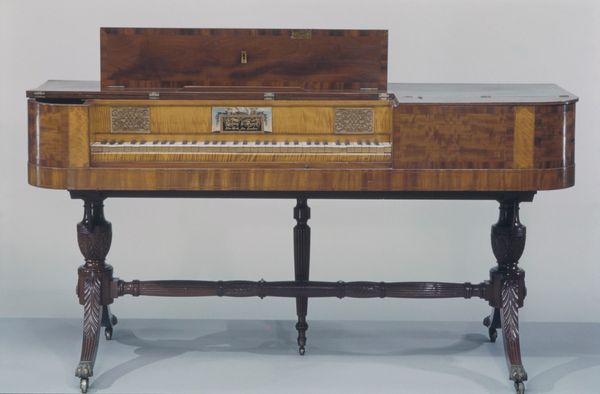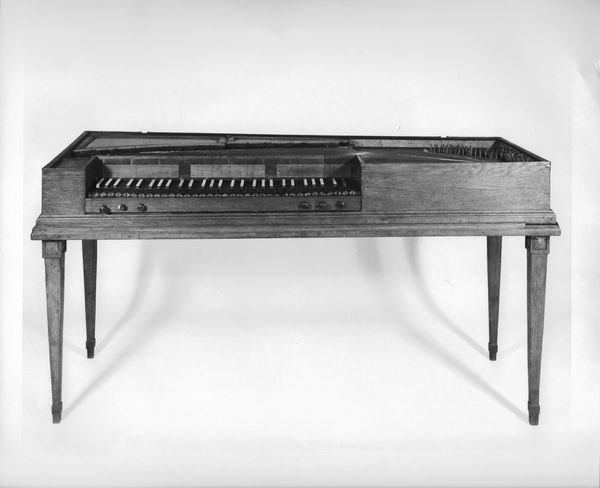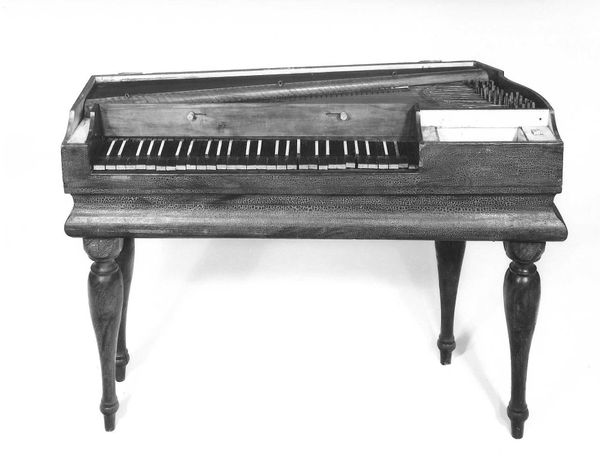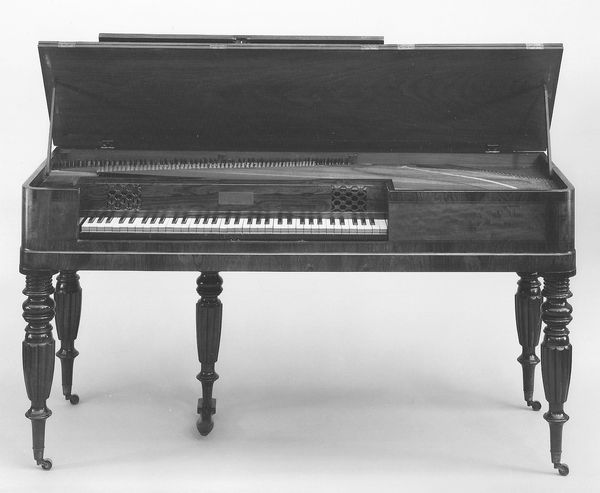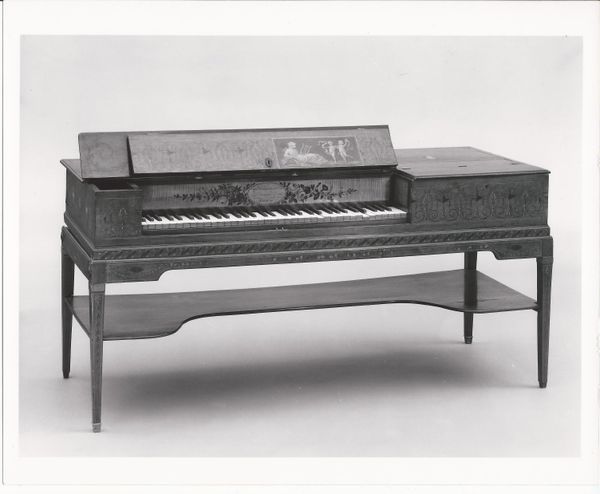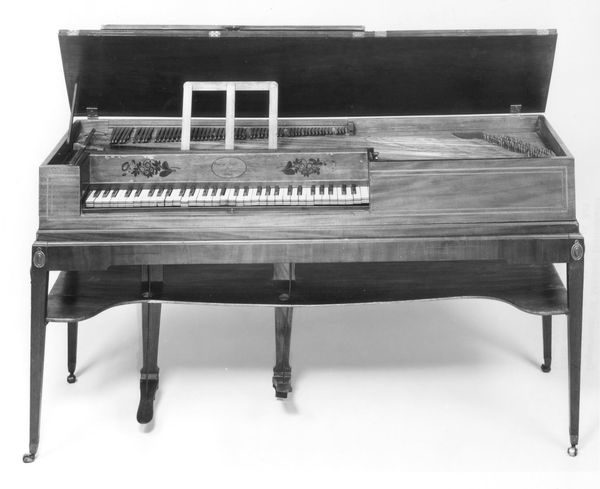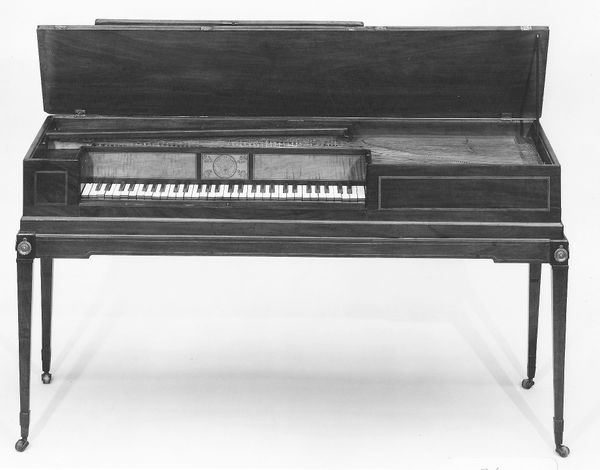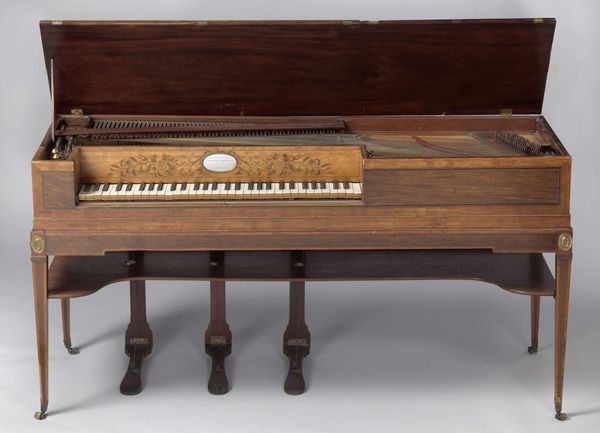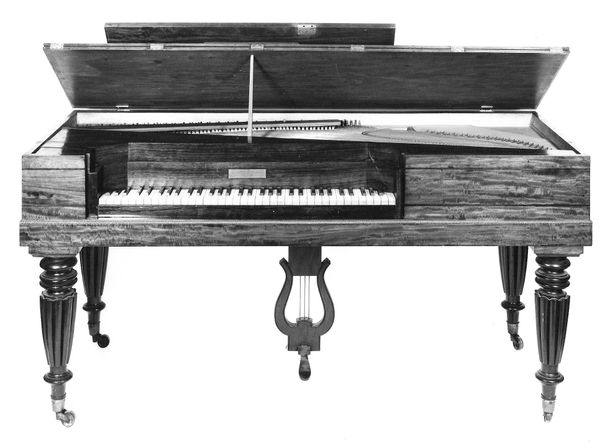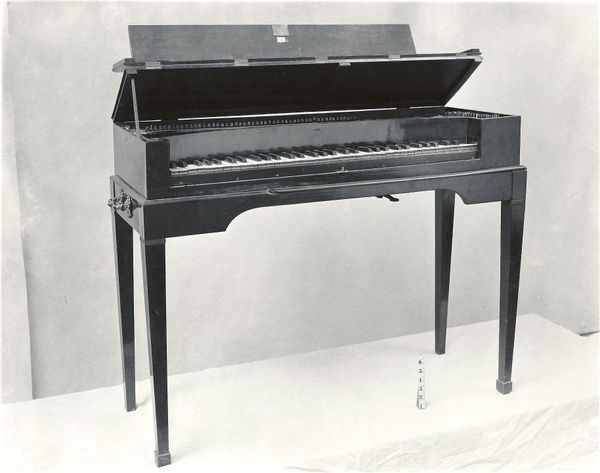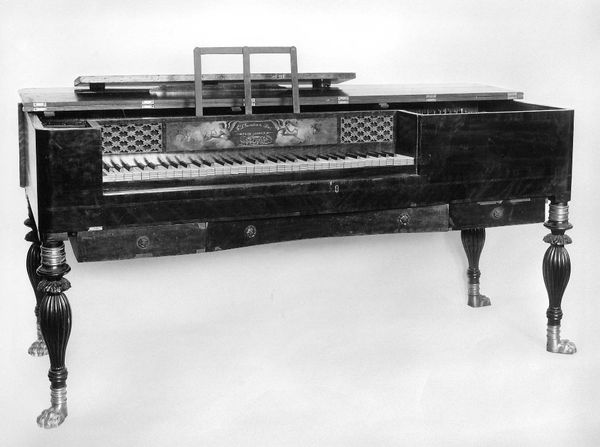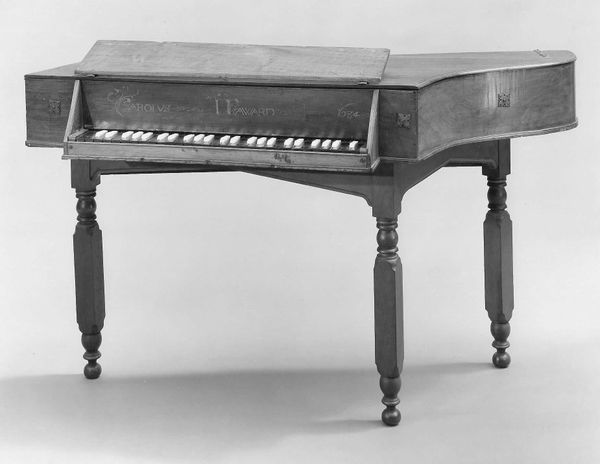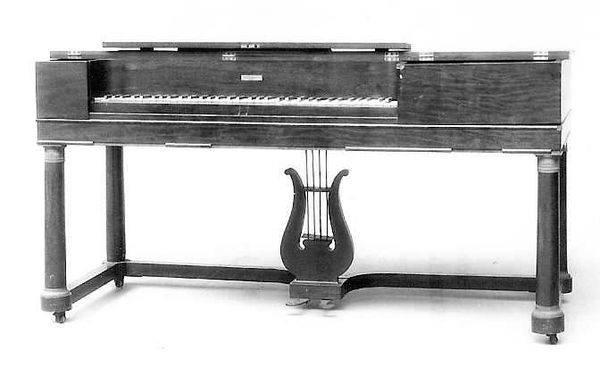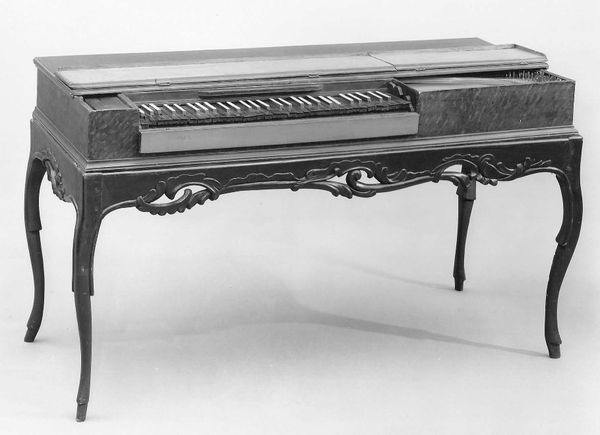
wood
#
neoclacissism
#
sculpture
#
furniture
#
wood
#
genre-painting
#
metal and woodwork
#
musical-instrument
#
decorative-art
Dimensions: Case L. (perpendicular to keyboard): 60.8 cm (24 in.); W. (parallel to keyboard): 167.1 cm (65-7/8 in.); D. of case without lid: 22.7 cm (9 in.); Total H.: 87,5 cm (34-1/2 in.)
Copyright: Public Domain
Editor: So, this is a square piano crafted by John Preston between 1790 and 1800. It's currently housed in the Metropolitan Museum of Art. I find the elegance of this wooden instrument remarkable, especially the refined neoclassical details and delicate craftsmanship. What can you tell me about the historical and cultural significance of an object like this? Curator: Well, a square piano like this wasn’t just an instrument; it was a statement. Consider the social context of late 18th-century society. Owning such an item indicated a certain level of affluence and cultural awareness. Think about the rise of the middle class at that time, aspiring to aristocratic ideals. Did owning a square piano influence how people socialized or created music? Editor: Absolutely, it suggests how musical performance might have been increasingly accessible to a wider demographic and how the decorative nature would be showcased within their social circles. Were these instruments more accessible to men or women at the time? Curator: Excellent point. Instruments like these played a huge part in the lives of women in that era. Displaying musical ability was a significant social accomplishment for women in aristocratic and middle-class circles. But beyond that, what does it tell us about the role of women in the arts and home entertainment at the time? How does the art serve and reproduce established gender roles? Editor: I never thought of it that way. So, this piano is a reflection of societal expectations and artistic trends intertwining. That makes it more than just a musical instrument. It's a cultural artifact. Curator: Precisely! And seeing it displayed at the Met shifts our perception once again. Editor: It's fascinating to realize how objects can reveal so much about the society that created and used them. Thanks for pointing that out.
Comments
No comments
Be the first to comment and join the conversation on the ultimate creative platform.
